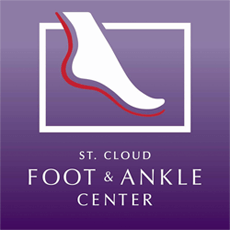 Custom orthotic devices can help relieve a variety of foot and ankle conditions. If you have or need custom orthotic insoles, it’s natural for you to wonder how long you can expect them to last. Custom insoles are medical devices designed for durability, but even high-quality custom orthotics eventually need to be replaced. Over time, the materials compress and lose their effectiveness.
Custom orthotic devices can help relieve a variety of foot and ankle conditions. If you have or need custom orthotic insoles, it’s natural for you to wonder how long you can expect them to last. Custom insoles are medical devices designed for durability, but even high-quality custom orthotics eventually need to be replaced. Over time, the materials compress and lose their effectiveness.
Below, the Central Minnesota podiatrists on the St. Cloud Foot & Ankle Center team explain how long custom orthotic insoles typically last, discuss key factors that affect their lifespan, provide tips to keep them functional for as long as possible, and also share how you can recognize when they need to be replaced.
Expected Custom Insoles Durability
Custom orthotics prescribed by a skilled podiatrist generally remain effective for between one and five years if you wear them regularly. However, a number of factors impact how long they last within this general timeframe. Key factors that affect their longevity include:
-
Activity type. Standing or walking will not cause orthotics to wear out as quickly as using them for higher-impact activities like running.
-
Body weight. Being overweight leads to greater compression forces with each step, which can shorten the lifespan of the cushioning material in orthotic insoles.
-
Wear Time. Daily wear time determines cumulative stress on your orthotics. The more you wear them, the faster they’ll need to be replaced.
-
Footwear. Well-constructed shoes provide stability that complements your orthotics, while worn-out or inappropriate ones can accelerate deterioration.
-
Environmental conditions. Excessive moisture, extreme heat, or exposure to some types of chemicals can affect the life of orthotic materials.
-
Maintenance. Proper care and storage of your insoles can help keep them in good condition longer.
With so many variables impacting custom insoles durability, it’s challenging to predict exactly how long a particular pair may last. That’s why you need to know how to recognize if your orthotic devices are showing signs of wear and need to be replaced.
Signs Your Custom Orthotics May Need Replacement
Wearing orthotic devices that are no longer effective can cause pain to return and lead to new problems with your feet. Signs indicating your insoles need to be replaced include:
-
Visible damage. The presence of cracks, tears, or separation between layers can significantly reduce the effectiveness of orthotic insoles.
-
Uneven wear pattern. An asymmetrical wear pattern on the bottom surface might indicate changes in your gait that require professional assessment.
-
Returning pain. If you notice the return of foot pain that your orthotics previously addressed, they're probably not providing adequate support anymore.
-
New discomfort. Experiencing new discomfort when wearing previously comfortable orthotics might indicate structural changes in the devices.
-
Increased fatigue. When insoles stop providing proper support, your foot and leg muscles must work harder to maintain stability, leading to earlier exhaustion.
If you observe any of these signs, it’s important to visit a podiatrist right away. The longer you wear orthotic devices that are past their prime, the greater the likelihood that you will experience increased pain and potentially develop a new foot or ankle condition that requires extensive podiatric care.
Custom Orthotics Lifespan: Tips to Extend Their Durability
Proper care and maintenance will allow you to make the most of your custom insoles’ functional lifespan. The skilled foot doctors on the St. Cloud Foot & Ankle Center team recommend:
-
Regular cleaning. Gently hand-wash your orthotics with mild soap in slightly warm water on a regular basis.
-
Thorough drying. Do not use your clean insoles while they’re still wet. Instead, allow them to air dry completely before putting them back into your shoes.
-
Multiple pairs. Having separate pairs of insoles for work shoes and other footwear athletic footwear can extend the functional life of each set.
-
Proper storage. Keep insoles in a cool, dry place away from direct sunlight and extreme temperatures when not in use.
It’s also a good idea to have your custom insole evaluated by one of our knowledgeable St. Cloud podiatrists at least once a year. This can help identify wear before it affects the function of your custom orthotics, as refurbishment or minor modifications might be able to extend their useful life without requiring replacement right away.



